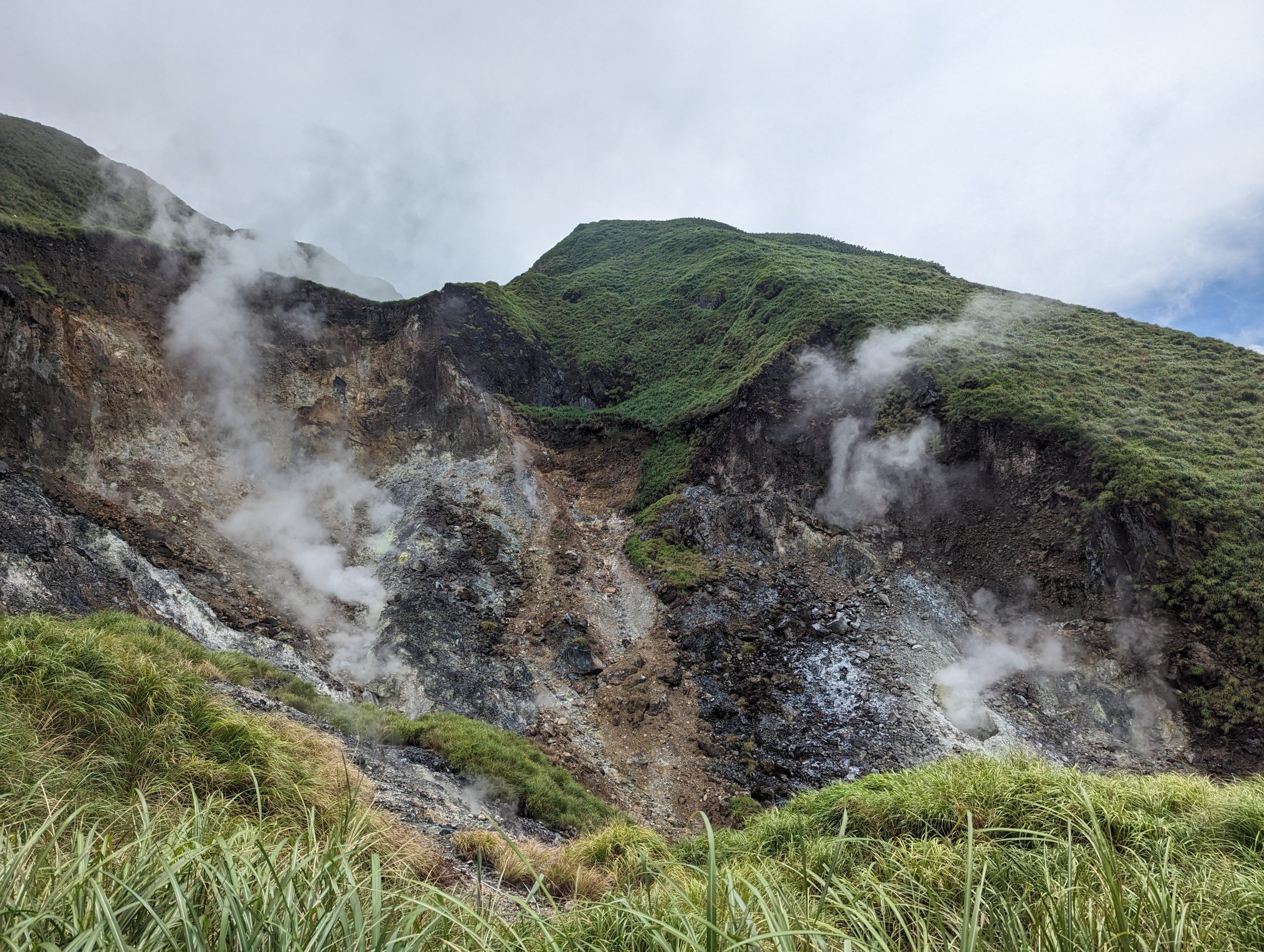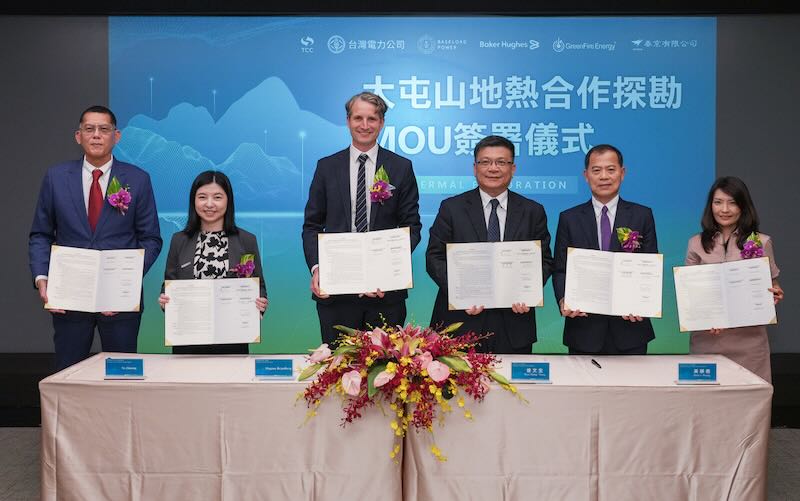
What was once a regulatory void has become fertile ground for geothermal energy – but its future may hinge on who else is willing to drill.
As Taiwan accelerates its renewable energy transition, a long-overlooked power source is beginning to attract attention: geothermal. Often overshadowed by solar and offshore wind, geothermal energy offers one of the few green baseload options, providing consistent, weather-independent power.
After decades of interest, commercial-scale development in Taiwan has remained modest. That’s beginning to change, though not without its own set of regulatory and technical hurdles.
For years, Taiwan’s geothermal ambitions stalled amid legal and regulatory ambiguity. Developers operated in a kind of policy limbo, where outdated laws meant for hot spring tourism – rather than industrial-scale energy production – were the closest thing to a geothermal framework.
That began to shift in late 2023, when the Ministry of Economic Affairs (MOEA) amended the Renewable Energy Development Act to include a dedicated chapter on geothermal energy. The amendment paved the way for the Energy Administration under the MOEA to issue Taiwan’s first formal permitting framework in 2024, outlining clear processes for exploration and development.
“We appreciate that the government has been open and willing to listen, which is vital because this is still a new industry in Taiwan,” says Claire Lai, regional marketing director at Baseload Capital, an international investment firm specializing in geothermal energy projects. She notes that the MOEA has been proactive in collecting input from the industry and doing its best to move forward based on recommendations and its own studies, particularly ahead of regulatory rollouts.
Although the legal foundation is finally in place, stakeholders stress that Taiwan’s geothermal sector remains fragile. Developers still face considerable red tape, unclear permitting boundaries, and resource uncertainty. Despite the announcement of a national goal to install 6 GW of geothermal capacity by 2050, execution remains in the early stages.
“Of course, continuous improvement is still needed, but the policy change was a huge and commendable step from the government,” says Van Hoang, chairman and CEO of Baseload Power Taiwan, an independent heat power producer. “But developing a power plant involves other ministries too, such as those responsible for land use or environmental issues. The challenge lies in bridging those gaps where ministries can work together to find the best solutions for the industry.”
Taiwan’s first commercial geothermal plant in decades, the Qingshui facility in Yilan County, reopened in 2021. It was followed by a steady uptick in private sector activity, with roughly 20 small projects now underway. Baseload Power Taiwan, a subsidiary of Baseload Capital, has become the island’s most prominent international geothermal developer. Its projects focus on shallow reservoirs under 2,000 meters, offering more manageable development conditions.

Still, the scale is small. Even with the introduction of a favorable NT$5.8 per kilowatt-hour feed-in tariff (FIT) – the highest among Taiwan’s renewables – industry players say it barely offsets high exploration costs and technical risk. Drilling remains expensive, and only a fraction of wells yield viable output. Based on Taiwan’s own experience with oil and gas exploration, only one in three wells typically yields successful results.
“Another key factor is financing,” says Hoang. “One of the biggest accelerators for the industry is having enough funding in the early phases. Typically, we see three things that help industries move forward – policy, geology data availability, and financial instruments.”
To de-risk exploration, the government has introduced partial compensation policies. If a project fails, developers may receive reimbursement of up to 50% of drilling costs. Officials hope this will spur more companies to take a chance on geothermal, but the incentive has not yet translated into large-scale momentum.
A lack of coordination across agencies and jurisdictions continues to stall development. While national policies have grown more supportive, local governments vary widely in their understanding of geothermal energy and how to regulate it. In some cases, hot spring laws are still applied to power generation projects, creating regulatory mismatches and inconsistent enforcement.
These issues have broader implications. Without a centralized geothermal data repository or a cohesive strategy for reservoir management, developers risk encroaching on shared resources.
“Imagine putting a straw into a can of Coke and drinking everything at once; it might be good for a short while, but eventually, it runs out,” says Simon Westerlund, Baseload Capital’s investment manager for Taiwan and Asia. “We’ve seen situations where developers are located too close to each other, so we’re trying to emphasize that even if there are multiple independent power plants, they may be drawing from the same geothermal reservoir, compromising the entire resource.”
International best practices suggest a different model. Countries like Indonesia and the Philippines have long designated entire geothermal fields to single developers to streamline oversight and ensure sustainable extraction. Taiwan, however, has opted for a more decentralized approach.
Signs of progress are emerging. A high-profile memorandum of understanding signed in 2025 between state utility Taipower, Taiwan Cogeneration Corporation, and Baseload Power signaled a stronger push for public-private collaboration. The project, located in the Tatun Mountain area, could serve as a blueprint for larger-scale geothermal development if successful.

Meanwhile, Taiwan is hosting more geothermal-focused events, including the country’s third international geothermal conference in April 2025. The event is expected to spotlight new technologies and address the sector’s most pressing bottleneck: drilling.
“Taiwan lacks enough rigs, and there aren’t enough trained personnel to operate them,” says Westerlund. He notes that the focus of the conference is likely to be on technology vendors and drilling service providers. “This is a good development, as the next step is to establish a robust supply chain and attract international expertise.”
Poised for partnerships
Although geothermal power is Taiwan’s most overlooked renewable energy resource, it’s also one of its most promising. Unlike wind and solar, it provides stable, round-the-clock power, and its potential extends beyond electricity generation. Captured heat can be repurposed for everything from greenhouse cultivation to industrial processes and district heating.
But realizing its full potential will require more than generous FITs. It demands streamlined regulations, clear permitting pathways, improved subsurface data, and long-term policy consistency. “We are moving in the right direction, but we’re not yet aligned with international best practices,” says Hoang.
Globally, countries like Iceland, Kenya, and the Philippines offer valuable case studies for geothermal development. Each has crafted its approach based on local geology, economic structure, and institutional readiness. In Iceland, for example, strong public-private partnerships and publicly funded research institutes have helped de-risk early-stage exploration. Meanwhile, Kenya follows a government-led model in which early-stage drilling is carried out by the state before projects are handed off to private developers.
For Taiwan, these global models highlight the need for a national geothermal strategy. Instead of relying on fragmented efforts by private firms, a unified government approach could consolidate resources, centralize data, and coordinate mapping to minimize duplication and accelerate development.
“If you want a market to truly succeed, you need data availability,” says Westerlund. Sharing high-quality public data is crucial to determining whether a reservoir exists and how much potential it holds while ensuring cooperation among industry players.
Advanced Geothermal Systems (AGS), which leverage horizontal drilling and closed-loop technology, are also generating interest as a potential game-changer for Taiwan. These systems offer the promise of accessing heat in areas once deemed unsuitable for development. While not yet commercially deployed on the island, international partnerships with Icelandic and U.S. technology providers could help accelerate their adoption.
To address its shortage of drilling rigs and expertise, Taiwan is turning to an unexpected source: its legacy fossil fuel sector. CPC Corporation, the state-owned oil and gas company, has begun redirecting its subsurface expertise and equipment toward geothermal exploration. Industry players see such partnerships as a pragmatic way to accelerate development, noting the technical similarities between geothermal and oil and gas drilling. By repurposing existing industrial capacity, Taiwan could bridge near-term infrastructure gaps while laying the groundwork for a long-term renewable energy ecosystem.
Taiwan’s broader renewable energy strategy has leaned heavily on solar and offshore wind, both of which benefit from clear policy support and public awareness. Geothermal, in contrast, suffers from a visibility problem. The benefits – stable baseload output, minimal land use, and potential co-uses – are less immediately apparent to policymakers and the public.
“When we arrived five years ago, geothermal awareness was virtually nonexistent,” says Lai. “We had to build that awareness from the ground up. It’s different at each level, but it all starts from scratch.”
Taiwan’s geothermal story now stands at a more complex crossroads. The question is no longer whether it can be understood, but whether it can be scaled, sustained, and shared. With regulatory barriers easing, the real challenge lies in translating hard-won progress into a collaborative and enduring industry.





